While in Beijing for the OpenOffice.org Conference (concerning which I owe you all a report), I was able to spend a little time playing the tourist. I thought I’d share some of the picture I “took”. Each of these images is an HDR image, based on 3-5 source images of the same scene, with different exposures, combined using Photomatrix software.
Although HDR techniques can be used to create realistic-looking (or nearly so) images, in these cases I intentionally step beyond literal reality and attempt an impressionist portrayal of the scene. Jet lag, no doubt, played a small part in my impressions…
First up we have a view of the terrain at Badaling, the popular section of the Great Wall near Beijing. It was a lot colder here than it was in the city, and I was woefully under-dressed. The skies were dull and gray. Standard advice in this situation is to show as little sky as possible. Otherwise you’ll get a dull, ugly, featureless swath of grey. Instead, focus on the landscape and avoid the sky. For low dynamic range photographs, this may be the case, since you cannot bring out any detail in the clouds, but with HDR you can have detail in the clouds as well as the mountains.
I might work on this shot a little more. I think re-cropping it into more equal thirds of sky, background mountains and foreground hills might work well.
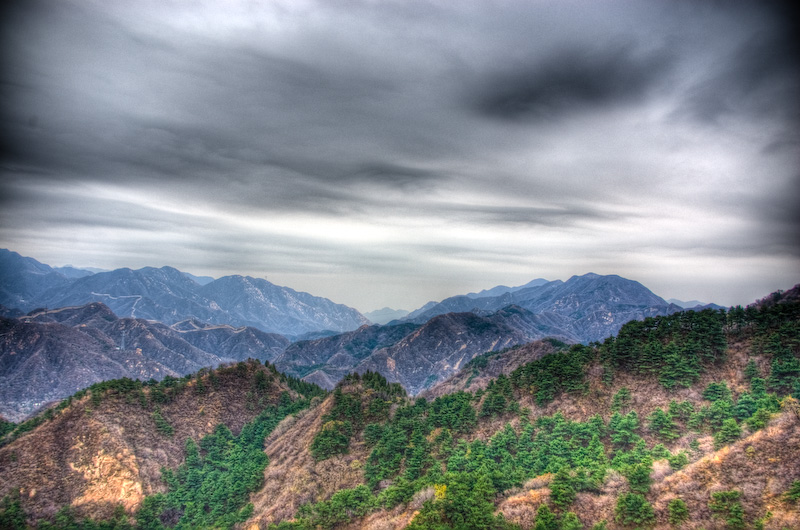
Another view at Badaling. It started snowing shortly after this shot was taken.
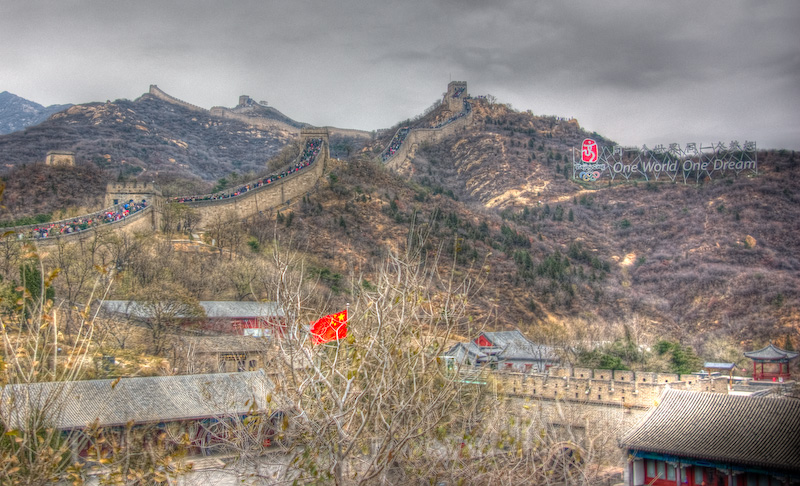
This is the Boat of Purity and Ease, better known as the Marble Boat, famously restored by the Empress Cixi with funds that were intended for the imperial navy.
The challenge here was that the boat had vivid detail on the exterior, as well as interior details. Expose for the exterior and the interior would be underexposed, but if you expose for the interior, the exterior would be blown out. But if you combine three exposures with HDR, you can get detail all around.
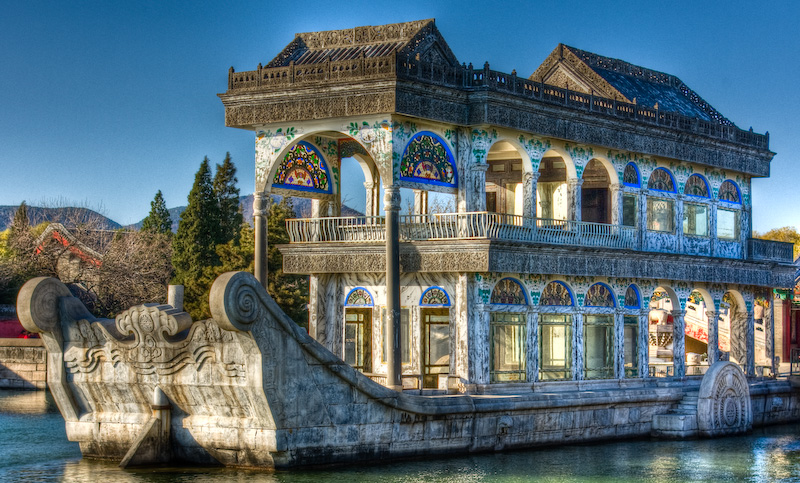
This is the Seventeen-Arch Bridge at the Summer Palace. Don Harbison and I were eying this bridge for much of our visit that day, trying to figure out the ideal vantage point and time for “the shot”. It came around 5:30 that afternoon, as the sun was setting, viewing the bridge from a little strip that juts into Kunming Lake.

At the top of Longevity Hill is the Tower of Buddhist Incense (Foxiangge). This is not a posed picture. In fact, I don’t know who the subject in this photo is, but she looked so relaxed and content that I could not help but quietly steal a few pictures. Some shots take an hour to plan and compose. Others are chance and take advantage of a 10 second window of opportunity. This was of the latter variety.
This picture needs some work in Photoshop to remove the distracting cable going down the column.
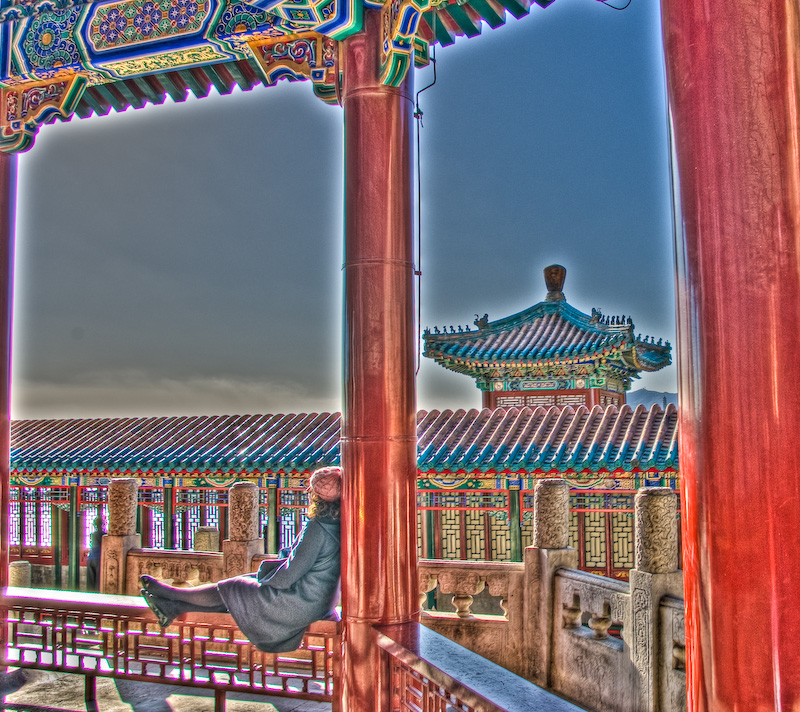
This is the Bronze Ox, cast in 1755, looking back to the Tower of Buddhist Incense. I like the ripple of sunlight on the neck. But there is some serious fringing artifacts going on here, under the ears and horns. This shot can certainly be improved on. I keep it as a reminder that I need to return to Beijing and take more and better photographs.
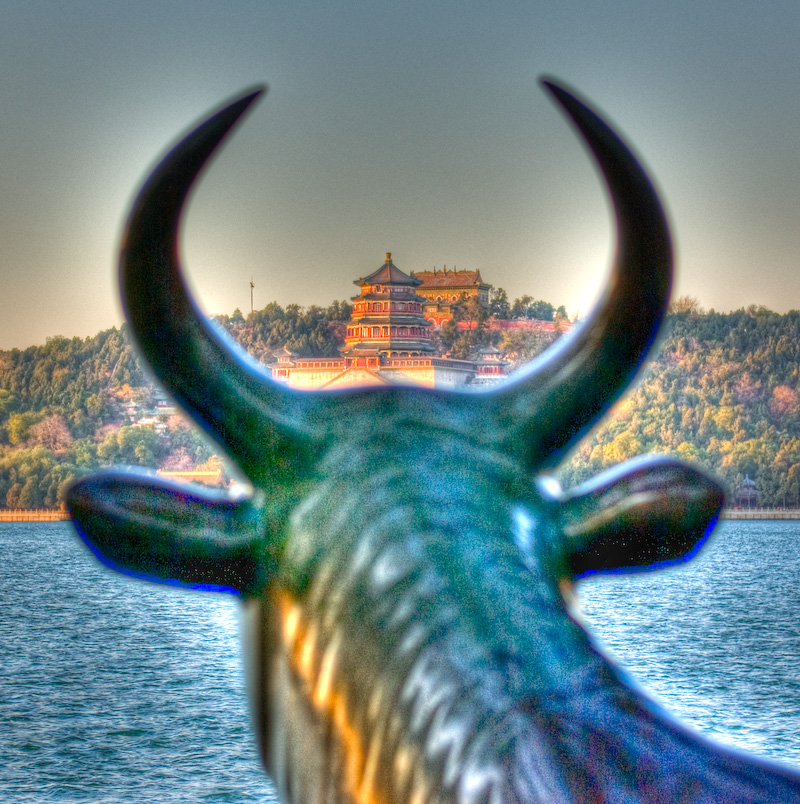
That’s some nice HDR, Rob… they seem to get more psychedelic as the sequence progresses. I particularly like the stone boat thing and the bridge (really rich reflections).
– Alex.
Beautiful pictures. Just started on HDR pictures myself.
How do you get rid of the noise in the RAW images? Whatever I use just doesn’t seem to work. :-(
Great images Rob, for once I agree with Alex…
The last couple revive impressions of my youth and long days spent at a free music festival at Stonehenge.
I shot at ISO 100, so the source images did not have much noise to start with. The exception is that last scene, with the brass ox, where the ox was underexposed and noisy.
I think that is the key — shoot with low ISO’s. Most cameras will have low noise in the 100-400 range, but will get progressively noisier above that.
The bronze ox is great. Just the right depth of field.
I’ve experienced those sorts of artifacts too. I’m not sure why they’re so much stronger in some images than others.